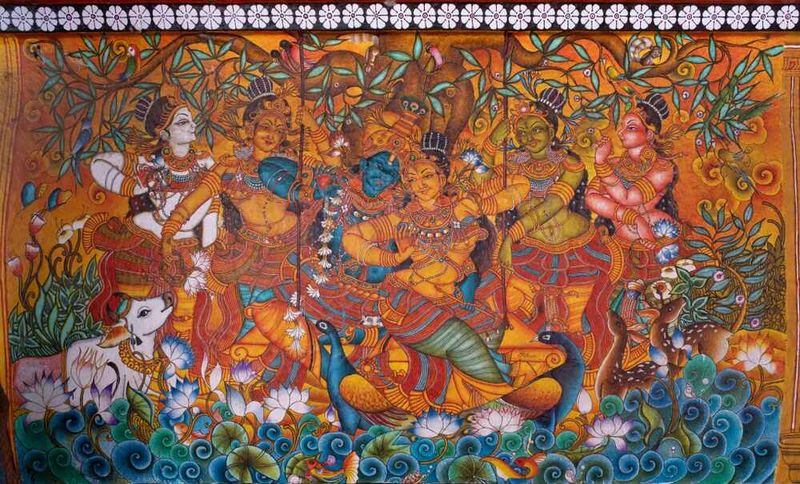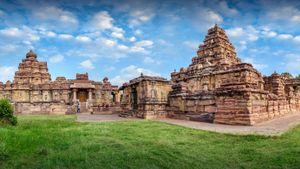With the distinctive thought process that an artistic soul vocalises — traditional Karnataka painting visually narrates the chronicles of life, culture, heritage, region, religion and many more. This Aisatic art form associated with the state's geography makes sure to stun people with the bestowed talent. If you are also a creative appreciator, discover how the land of sandalwood has preserved regional art by navigating through the intricate details of Chitrakathi and the delicate brushstrokes of Mural.
Here are some of the Karnataka painting art forms every aesthete must know
Chittara folk painting

The traditional art form of Karnataka usually narrates mythological facts and takes portraits of deities, holy animals, plants and many more. Usually crafted on walls, doorways, or wooden boards of public buildings, temples and houses — Chittara is a depiction of devotion and faith.
This folk expression is curated using natural colours made from fruits, vegetables and flowers. How, you ask? Well, the process is a little lengthy where in the base product is grinded into a fine powder and then mixed with water to create the organic paint colour. When the paint is ready, the artist starts sketching the structure on the surface and paints the design once completed.
Chittara is a tradition passed down through the generations and is protected by rural communities, who use it to decorate their homes in the hope that it will ward off evil spirits and bring them blessings.
Murals

Murals were painted on commission by the Chalukya kings, as evidenced by Badami. These are on Lord Vishnu; they resemble those in the Ellora and Ajanta Caves. Designed on walls, caverns and ceilings of homes, temples and royal palaces murals are centuries-old art forms. The famous places where this art form is used are Ajanta and Ellora Caves, Lepakshi Temple, Virupaksha Temple, Jamia Mosque and Asar Mahal.
Warli

Usually known to be the Maharashtrian art form, Warli is also practised by the Warli tribe in some parts of Karnataka. It involves creating intricate patterns and scenes using simple geometric shapes like circles, triangles, and lines. Warli paintings often depict daily life activities, festivals, and rituals. The idea of Mother Nature is central to Warli culture, and natural aspects are frequently portrayed as the main areas in Warli paintings.
The basic method of creating this Karnataka painting art form matches the straightforward visual language of Warli paintings. The dirt, trees, and red brick that make up the walls create a background of red ochre for the paintings. The sole paint used by the Warli people is a white pigment that is binded with gum and created by mixing rice flour and water. To make a bamboo stick feel like a paintbrush, the end is nibbled.
Mysore traditional painting

The place of origin Mysore is well-known for this traditional Indian painting style – Mysore painting. This kind of art is renowned for its exquisite details, grace, and application of gold leaf. The art was majorly fostered during the period of Wodeyar dynasty in Mysore i.e. 16th to 18th centuries from.
Crafted on treated hardwood boards called Mysore gold boards — the art form is sketched using charcoal or pencil and painted by natural pigments like vegetables, minerals and stone. Lastly, using sticky materials, gold leaf is meticulously applied and fastened, making it the process's highlight. To make the artwork come to life, the artists expertly combine colours and add minute details.
Art festivals, exhibitions, and workshops give Mysore traditional painting artists a stage on which to demonstrate their abilities and impart knowledge to upcoming generations.


_1704390172433_thumb_1200.jpeg?w=3840&q=75)
_1681730911236_thumb_300.png)

